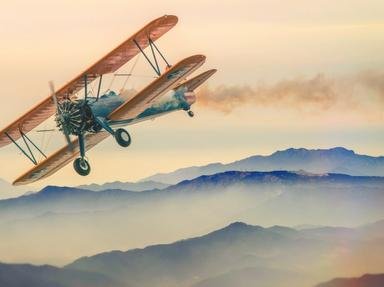Quiz Answer Key and Fun Facts
1. Man has dreamt of flying for thousands of years,(think of Icarus). It didn't happen, though, until the latter part of the 18th Century. Who is credited with the first 'lighter than air' flight?
2. A standard hot air balloon is dependent on wind to produce motion. What development was added to make them steerable and become useful machines for the military?
3. In 1804 the first glider was flown. It was soon developed sufficiently to carry a small boy. The craft was designed and built by an Englishman. What was his name?
4. The first recorded powered flight by a heavier-than-air machine is credited to John Stringfellow from Chard, Somerset. In which year did this historic event take place?
5. The problem of manned, powered flight was essentially solved in 1885 with the invention of the internal combustion engine. It was designed and built by which German engineer?
6. Everyone knows that Orville Wright made the first controlled flight by man in a powered heavier than air machine. But in 1908 he also had a more dubious honour whilst demonstrating the Wright Flyer at Fort Myer, Virginia. What was the cause of this?
7. Aviation was also developing in Europe in the early years of the 20th century. Frenchman Louis Bleriot became the first person to fly across the English Channel. His aircraft also achieved several other notable firsts. Which of the options was NOT one of them?
8. In 1912 a competition was devised for seaplanes to encourage advances in the industry. Over its short history (it was only held 11 times) it developed into a competition of pure speed. Which competition, reinstated in 1981 under a revised format and using a replica trophy, was it?
9. Towards the end of WWII both Britain and Germany introduced a new type of aircraft, the jet. Both countries had been developing them since the start of the war. The British aircraft was the Gloster Meteor. What was the German aircraft called?
10. Powered aviation has come a long way in a little over 100 years. From air balloons, to piston engines and on to jets. Today man is looking at alternate means to travel through the air. In 1979 a man-powered aircraft became the first one to cross the English Channel, echoing Bleriot's achievement 70 years before. Which man-powered aircraft completed the journey?
Source: Author
romeomikegolf
This quiz was reviewed by FunTrivia editor
stedman before going online.
Any errors found in FunTrivia content are routinely corrected through our feedback system.

